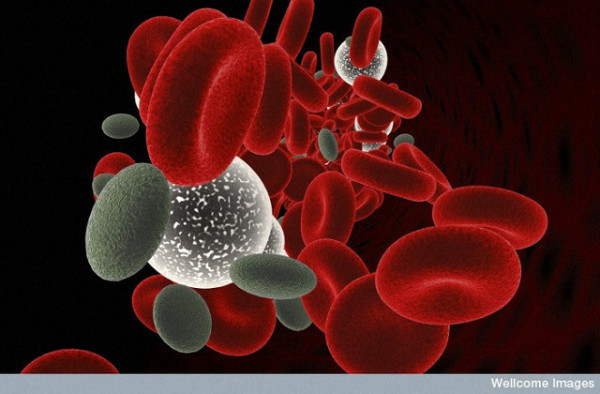After a doctor’s visit, your physician often orders some labs to be done. After valiantly braving the needle and plastering on a Spongebob band-aid, do you ever wonder what happens to the tube of blood the phlebotomist has carefully labeled? How does it translate into useful information that you and your doctor can understand? Let’s find out!
One of the most commonly offered labs is the CBC, or complete blood count. This blood test tests the amount of cells in your blood and can be used to detect a variety of things, from simple infections to cancer. There are several components tested, namely, red blood cells, white blood cells, hemoglobin, hematocrit, and platelets.
The various components have different functions. Red blood cells, or erythrocytes, contain hemoglobin, which binds and transports oxygen throughout the bloodstream. Hematocrit is the percentage of red blood cells that make up the blood. White blood cells, or leukocytes, are involved in fighting off foreign particles as a part of the body’s immune response. Finally, platelets, or thrombocytes, help form blood clots to protect against excess blood loss during injury.
Image Source: Matt Meadows
The CBC can give physicians an overview of your health but also provide specific information to help them make a diagnosis or track the progress of treatment. For a healthy individual, cell counts can vary a little outside of the normal range. But for individuals with a chronic illness or undergoing chemotherapy, these values are very important to monitor closely. The normal ranges for a CBC depends on a variety of factors; however, on average, the values are as follows:
For men,
- RBC = 4.32 to 5.72 trillion cells per liter
- Hemoglobin = 13.5 to 17.5 grams per deciliter
- Hematocrit = 38.8 to 50%
- WBC = 3.5 to 10.5 billion cells per liter
- Platelets = 150 to 450 billion per liter
For women,
- RBC = 3.90 to 5.03 trillion cells per liter
- Hemoglobin = 12 to 15.5 grams per deciliter
- Hematocrit = 34.9 to 44.5%
- WBC = 3.5 to 10.5 billion cells per liter
- Platelets = 150 to 450 billion per liter
If you have just received your CBC results and noticed some abnormal or irregular values, here are some common reasons why.
Red blood cell count, hemoglobin, and hematocrit are all related to red blood cells and provide contextual information for irregularities related to this cell type. Abnormal red blood cell counts can be caused by various illnesses from lung disease, to chronic kidney disease, to bone marrow disorders. Low values indicate anemia. High values indicate polycythemia.
White blood cell counts can be affected by autoimmune diseases, infections, and cancers, like leukemia. Low values indicate leukopenia and leukocytosis.
Finally, irregular platelet counts may be due to rheumatoid arthritis, infection, or iron deficiency. Low values indicate thrombocytopenia, while high values indicate thrombocytosis.
While understanding your lab results can give you better context of your health, please do not attempt to make a diagnosis on your own on the basis of your results. Always consult with a medical health professional who will be able to provide the best assessment of your condition based on a variety of different factors.
Feature Image Source: B0009526 Blood cells, illustration by Wellcome Images










